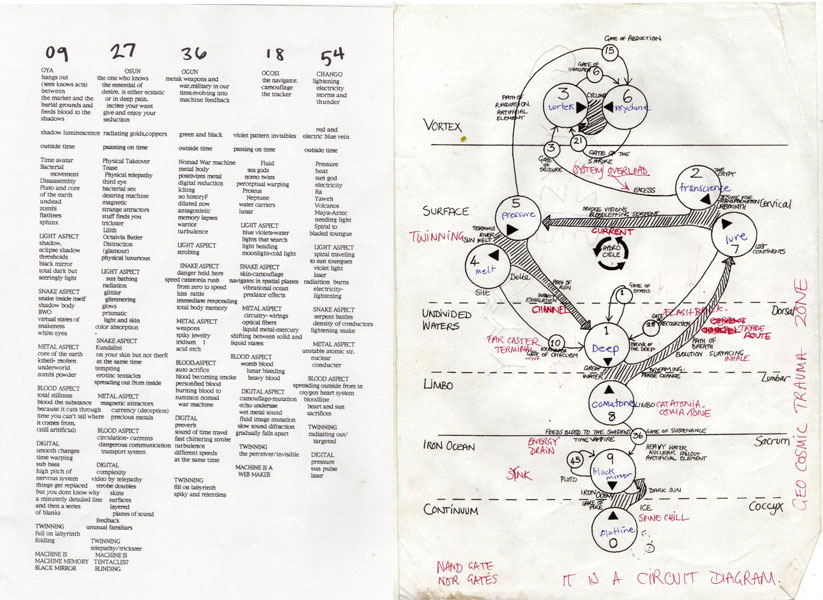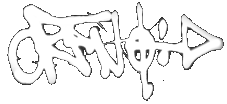Syzygy 26/02/99-28/03/99, Beaconsfield Arts, London
was a major project developed by 0rphan drift and the Cybernetic Culture Research Unit for Beaconsfield Arts London, and funded by the Arts Council of England.
Responding to the prevalent narratives around the coming millennium and Y2K, the project was an alternative calendrical system based on five elemental avatars; numerically based cultural machines embodying insistent energetic tendencies then present. The system was made manifest in an installation functioning as the ground for a series of audio visual performances and workshops. The five avatars each presided over a 3 day weekend of programming, their characteristics leading sound and image production as well as choreography and audience engagement.
CCRU developed workshops around the calendrical system while 0rphan drift produced the installation, static works, video and live mixing. We also directed commissioned collaborators for events; the physical performers Traxis and sound by Ocosi, Apache 61 and Dmitri Nakov . CCRU commissioned live audio by Kodwo Eshun and Kode9.
Video
Avatars and static works
Avatar Tools for Engineering Demon Convergence in a Space
Ritual
Excerpt from Review by Jim Flint, Mute Magazine, issue 13
“While the CCRU was more interested in the theoretical underpinning of the show , the 0rphan¹s side concerned itself with the dynamic reconstruction of various numerically based cultural machines, and to this extent there was a fictional element.- 0D used the notion of the demon in its various forms (though they prefered the term ¹avatar) to code the various elements they were trying to make coherent within the contemporary mediasphere. Thus we were shown the avatar as a unit of sorcery; as a figure historically used to provide an ‘informational outside¹ with physics, a link between logic and noise, as in Maxwell¹s demon; as a software agent, as semi-intelligent and semi-autonomous code-bot; and as a disruptive figure of darkness. For 0D, all of these have in common the casting of the demon as a multiple and individious unit of ontological disintegration, but one that is implicit in any act of communication- something which the angelogies of Michel Serres have already taught us. By recasting each node/operation on the CCRU numagram as an avatar or demon- the art on display- the collages, dancers and audiovisual events- -expressed each avatars realisation as a tendency in cultural production. Thus one avatar, KATAK, grew out of the conflict between electricity and sunlight and linked to belief systems and sacrifice, to the concentrations of power typical of fanatacism, while another, XES, was born of the reality of total surface presented by the camera. One creative conflict, one source of power, for all five of the avatars was the duality that exists between tools and weapons, each able to perform the function of either depending upon the circumstance.”

